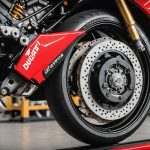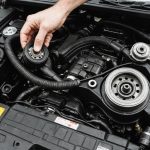Overview of Retrofitting a Heated Steering Wheel
Retrofitting a heated steering wheel is becoming an increasingly popular trend among car owners seeking luxury car upgrades. This process involves adding a heating element to an existing steering wheel to offer additional comfort during cold weather. It’s not only about improving warmth but also enhancing overall driving experience, especially for those who endure long winter drives.
Retrofitting involves modifying an existing vehicle with advanced features not originally included. It allows drivers to benefit from the latest car technologies without having to purchase a new vehicle. Heating systems in steering wheels provide consistent warmth and can greatly improve comfort during chilly conditions.
In parallel : Essential Guide to Effectively Maintaining the Cooling System of High-Performance British Cars
Several key features should be considered when retrofitting a steering wheel. Firstly, the ease of installation is crucial. Kits with comprehensive instructions or professional installation services are greatly preferred. Secondly, the heating speed is significant. Fast-heating options ensure the steering wheel warms quickly, providing instant comfort. Lastly, the temperature settings available can affect usability. Adjustable temperature settings cater to personal preferences and variable weather conditions.
As the demand for luxury and comfort in vehicles increases, so too does the popularity of retrofitting heated steering wheels, offering practical and enjoyable improvements for any car owner.
Also read : Maximize Your Mileage: Expert Tips for Enhancing Fuel Efficiency in British Hybrid SUVs!
Necessary Tools and Materials
Before embarking on a retrofitting project, it’s vital to gather the correct tools and materials to ensure both safety and durability. A diverse array of tools is needed for the job, each serving a pivotal function.
Essential tools include safety gear, such as gloves and goggles, ladders or scaffolding, measuring tools like a tape measure and level, as well as power tools like drills and saws. These are crucial for precision in installation and adherence to safety standards.
Equally important are the recommended materials. For any retrofit, using high-quality materials is non-negotiable. It ensures the structure’s durability and long-term safety. Material specifications will vary depending on the structure being retrofitted. Key materials include steel reinforcements, high-grade concrete, and insulating materials that meet energy efficiency standards.
The importance of quality cannot be overstated, as subpar materials could compromise safety. Durability stems from investing in materials that withstand environmental pressures and deterioration over time. Prioritizing these aspects will significantly extend the life and effectiveness of the retrofit, safeguarding against potential hazards and costs associated with future damage or failure.
Step-by-Step Retrofitting Process
Embarking on the task of retrofitting a vehicle with a heated steering wheel involves a meticulous process, necessitating careful assessment and preparation.
Preparation Steps
Understanding the vehicle’s compatibility is vital. Ensure that the car model can support additional wiring and electrical components necessary for the installation. Collect all required tools and materials, which typically includes a set of standard mechanical tools, wiring kits, and the heating element itself.
Safety protocols are indispensable. Disconnect the car battery to eliminate any risk of electric shock or short-circuiting. Follow guidelines closely to prevent damage or injury during the retrofit process.
Wiring and Installation
The process starts with interpreting existing wiring schematics. This knowledge ensures that the heated steering wheel integrates properly with other electrical systems. Install the heating elements by carefully mounting them onto the steering wheel, ensuring that they fit snugly without affecting steering functionality. It’s crucial to adjust the wiring connections for complete functionality.
Final Adjustments and Testing
Proper installation techniques guarantee that the retrofit doesn’t impair the vehicle’s operation. Test the heated feature by gradually increasing the temperature settings to ensure even heat distribution. Make any necessary adjustments to enhance comfort, thus optimising the drive experience.
Case Studies and Real-World Applications
Exploring successful retrofitting examples in popular British luxury cars offers a glimpse into how cutting-edge technology revitalises these classic vehicles. Take, for example, the retrofitting of a timeless Rolls-Royce, where manufacturers integrated state-of-the-art infotainment systems while preserving the vehicle’s elegant aesthetic. Such transformations enhance both convenience and functionality.
Before-and-after comparisons are particularly enlightening in showcasing these upgrades. For instance, Jaguar enthusiasts have noted how seamlessly modern safety features like adaptive cruise control can be incorporated without detracting from the signature luxurious feel. These visual and performance enhancements often lead to renewed interest and appreciation for these iconic automobiles.
Various testimonials from car owners further underscore the benefits of retrofitting. One Aston Martin owner shared how the inclusion of Bluetooth connectivity and advanced navigation elevated their driving experience without compromising the car’s character. Another mentioned the improved fuel efficiency post upgrade, transforming long journeys into economically efficient travels.
These case studies not only highlight the successful integration of modern technology but also provide blueprints for others seeking similar enhancements. It’s a testament to how old-meets-new integration can breathe new life into the classic icons of British motoring heritage.
Safety Considerations and Regulations
When considering vehicle modifications, understanding safety standards is crucial. These standards ensure modifications do not compromise the vehicle’s integrity, reducing potential hazards. Professional assistance is recommended, particularly for complex retrofitting. Experts have the required knowledge to adhere to safety standards, providing peace of mind.
Legal considerations vary significantly across regions when it comes to modifications. It’s essential to research local regulations to ensure compliance, avoiding potential fines or legal issues. In some areas, certain modifications may be restricted or require certification. Knowing these specifics ensures modifications are both safe and legal.
Professional installation is particularly important for complex modifications related to safety features. For instance, changes to braking or suspension systems should never be DIY unless you are qualified. Professional installers ensure that new components are correctly integrated, maintaining safety and regulatory compliance.
Here are key points to consider:
- Check regional laws before embarking on modifications.
- Use professional services for installations impacting safety.
- Ensure modifications meet safety standards to avoid penalties.
Staying informed and seeking expert advice guarantees that vehicle modifications enhance performance without risking safety or violating legal standards.
Cost Estimates and Budgeting
Upgrading to a heated steering wheel can enhance comfort, especially in colder climates, but it’s essential to budget wisely for this luxury car upgrade. The typical costs vary based on whether you opt for a DIY installation or hire a professional.
For DIY enthusiasts, the costs are mainly for purchasing the kit, which can range from $50 to $200, depending on the car model and kit quality. However, you should be prepared for an investment of time and basic mechanical skills to ensure proper installation. Missteps in the DIY approach can lead to further expenses down the line.
On the other hand, a professional installation might set you back between $200 and $500. This higher expense includes labor and assurances that the job is done correctly, minimizing risks of malfunction.
When budgeting, consider all potential costs, including any unforeseen ones such as additional wiring or adapters not included in the primary kit. Additionally, researching and comparing options can aid in finding superior deals or promotions. Prioritizing quality, alongside costs, ensures long-term satisfaction with this luxurious enhancement. Evaluating your budget and installation skills honestly will help guide whether a DIY approach or professional service aligns best with your circumstances.
Product Recommendations for Heated Steering Wheels
When it comes to heated steering wheels, there are several models that are notable for their efficiency and user satisfaction. Popular choices include models with features like customizable heat settings and rapid warming capabilities, which ensure optimal comfort during colder months. These wheels are designed not only for luxury but also for drivers who prioritise comfort and practicality.
Recommended products often boast safety features, such as automatic shut-off mechanisms that prevent overheating. Moreover, many of these wheels are equipped with easy-to-use controls, letting you adjust the temperature to your preference.
In terms of availability, heated steering wheels can be purchased from major automotive retailers, both online and in-store. Websites of manufacturers often provide details on warranties, including options for extended coverage. It is advisable to inquire about warranty specifics at the point of purchase to ensure your investment is protected.
Additional benefits of these products include ergonomic designs that enhance grip and overall driving experience, making them a popular choice for comfort-conscious consumers. As the market grows, more competitive prices and features are emerging, providing buyers with a range of high-quality options tailored to their needs.
Expert Tips for a Successful Retrofitting Experience
Retrofitting your home with heated features can be a significant enhancement, but there are common pitfalls to watch out for during the installation process. One frequent mistake is improper attachment of the heating elements, which can lead to inefficient operation or failures. To ensure a seamless installation, carefully follow manufacturer guidelines and consider hiring a professional.
Once installed, maintaining these features is crucial for longevity. Regularly inspect the system for any signs of wear or damage, and clean filters to prevent blockages. This ensures optimal performance and can prevent costly repairs down the line.
For those new to retrofitting, there are plentiful resources available for research and community support. Online forums and social media groups are excellent avenues for troubleshooting and sharing experiences. Websites dedicated to home improvement often provide comprehensive guides and tips for maintaining heated features.
In addition, don’t hesitate to reach out to manufacturers or professional installers for advice. Understanding common mistakes, employing consistent maintenance, and utilizing resources effectively can lead to a successful and stress-free retrofitting experience. Proper planning and informed decisions will significantly enhance the value and comfort of your home.











